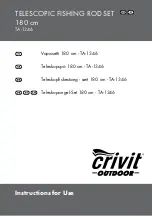4-21
The Algorithms and their Parameters
Stereo Adjust Delay and Feedback Page
These controls give individual channel control over the 5-second post-equaliza-
tion delay line.
5-second, 10 milliseconds per step, mono control for the left channel.
DLAY + LDLY must not total more than 5,000 milliseconds.
5-second, 10 milliseconds per step, mono control for the right channel.
DLAY + RDLY must not total more than 5,000 milliseconds.
Fine Sample Accurate Delays
These can be used for subtle time alignment adjustments. The 300 will correctly
display the resulting time shift as a function of the sampling rate. As many as 500
samples can be added to any stereo/coarse delay setting for a maximum
possible delay per channel of 5 s 500 samples.
48 kHz = 20.833 microseconds per sample
44.1 kHz = 22.676 microseconds per sample
32 kHz = 31.25 microseconds per sample
500-sample, 1 sample per step, mono fine adjust for the left channel.
500-sample, 1 sample per step, mono fine adjust for the right channel.
Two feedback paths are available per channel: overall and fine. Overall
feedback is the total delay of DLAY + L(R)DLY + L(R)FIN, and is useful for long
echo effects.
Fine Feedback is only around the Fine Delay and can be used for very short
delay effects and coloration.
All feedback gains are adjustable in 1% increments from -99% to +99%. If the
magnitudes of both feedback gains for a channel sum to more than 100%, that
channel will take off and overload.
On the 300 Effects Feedback page, overall and fine are distinguished by upper
and lower case lettering:
LFBK = Overall Left Channel Feedback
Lfbk = Fine Left Channel Feedback
RFBK = Overall Right Channel Feedback
Rfbk = Fine Right Channel Feedback
LDLY
(Left Channel Coarse)
RDLY
(Right Channel Coarse)
RFIN (Right Channel Fine)
LFIN (Left Channel Fine)
Summary of Contents for 300
Page 1: ...300 Digital Effects System V 3 0 Owner s Manual ...
Page 6: ......
Page 9: ......
Page 10: ...1 1 Installing the 300 1 Installing the 300 ...
Page 21: ...2 1 System Overview 2 System Overview ...
Page 30: ...3 1 System Operation 3 System Operation ...
Page 57: ...4 1 The Algorithms and their Parameters 4 The Algorithms and their Parameters ...
Page 93: ...5 1 The Presets 5 The Presets ...
Page 129: ...6 1 Time Code Operation 6 Time Code Operation ...
Page 139: ...7 1 MIDI Operation 7 MIDI Operation ...
Page 147: ...8 1 Troubleshooting 8 Troubleshooting ...


















